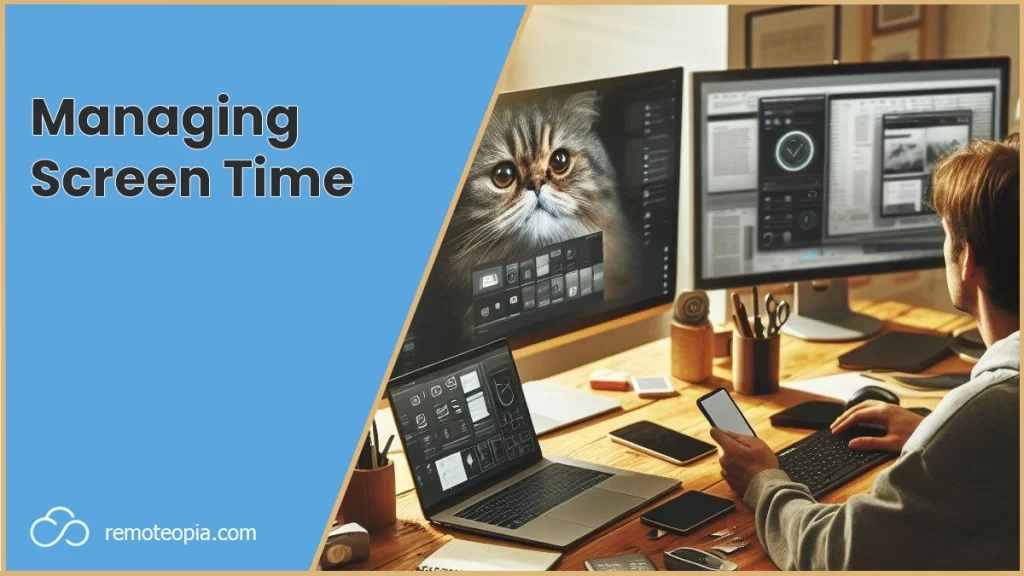
How Much Screen Time Is Too Much?
It can be hard to switch off and put the devices down, but research suggests that we should try to keep levels down to a certain level, namely 2-4 hours of recreational screen time usage for adults daily.
With digital technology being available pretty much everywhere you look nowadays, managing screen time is a big consideration.
Despite our best efforts, as we use them to undertake our work, hobbies, relax and communicate with friends and family, minimizing use can be hard.
Key Takeaways
Screen Time Case Study
I wanted to see how I measured up against the benchmark of 2-4 hours recreational screen time per day, and overall screen time.
So a couple of months ago I recorded all of my device usage for 2 weeks to get an average daily amount.
For context, I work a hybrid working model 5 days per week (1 in office, 4 at home) in a digital role. I also run 2 blogs, including this one. So I was prepared for some pretty hefty numbers!
My daily screen time use for the average week was very high.
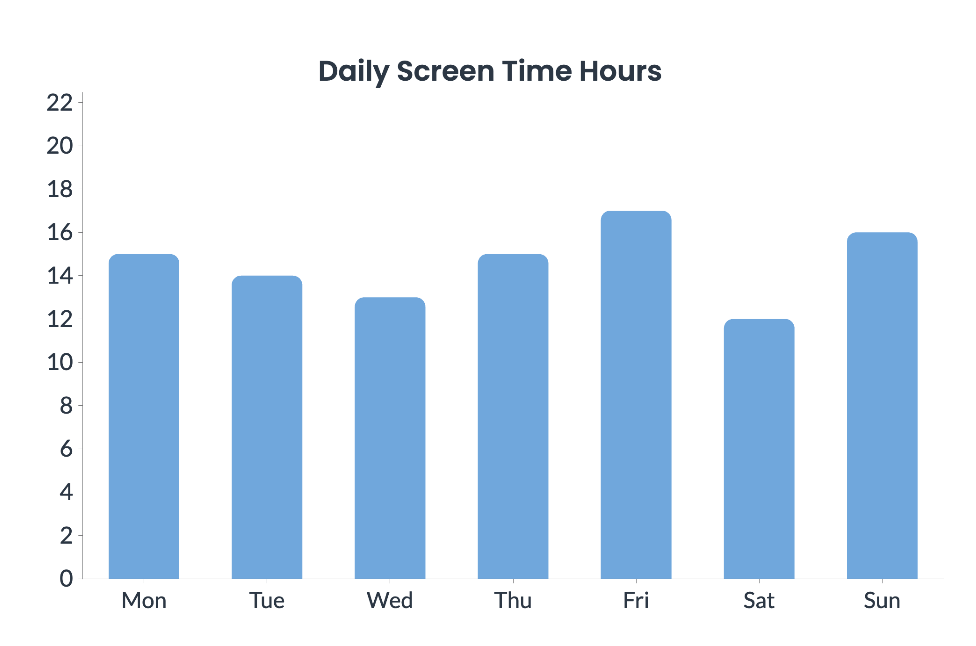
It varied on some days. With a slight drop on Tuesday – when I exercise, Wednesday – when I go into the office and Saturdays when I tend to socialize a bit more.
Friday was the highest, this was due to finishing work then watching a film and or a TV show most weeks.
I spend a lot of time on Sundays working on the blogs and creating content.
My weekly average was 14.57 hours or 60.7% of the day.
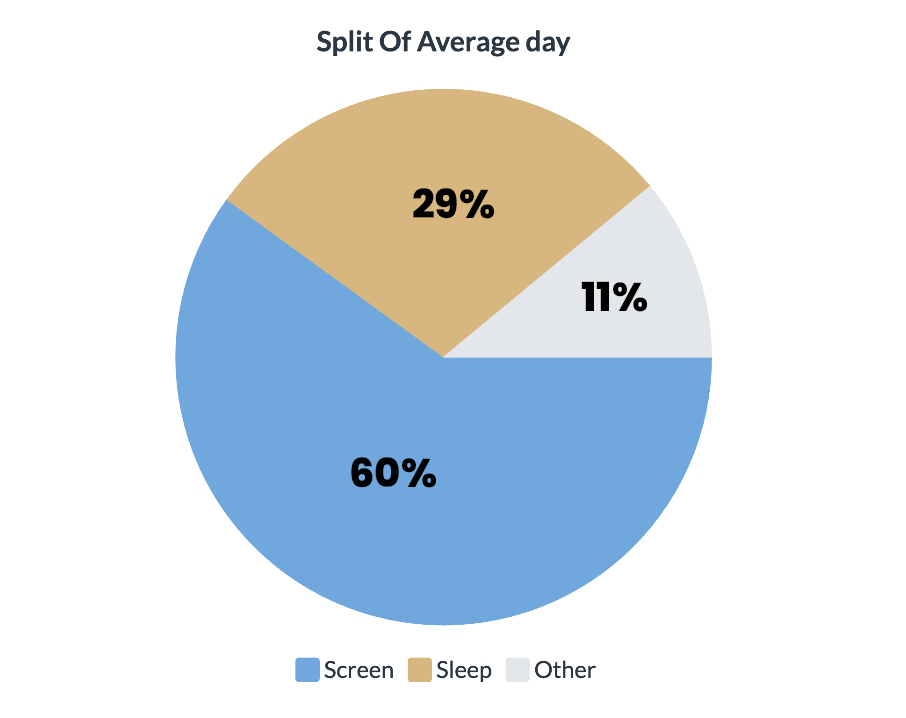
If you look at that as waking hours (I sleep for 7).It’s just over 85% of the waking day!
The majority of that time is spent on my laptop 63%
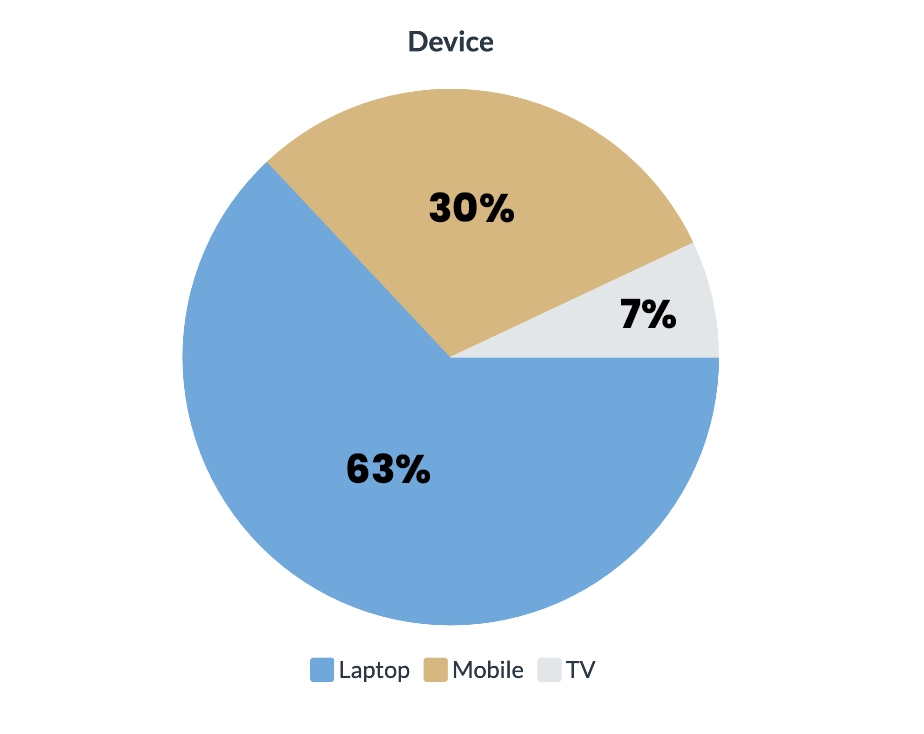
That correlates to the type of work I’m mainly doing (work and blogging) that I undertake on my computer, with smaller bits done on mobile at 30%
I tend to watch TV (7% of the weekly screen time) to relax in the evenings on occasion, but mostly on the weekend.
I spend 58% of my time working, 27% of my time blogging and 15% on more leisure related activities.
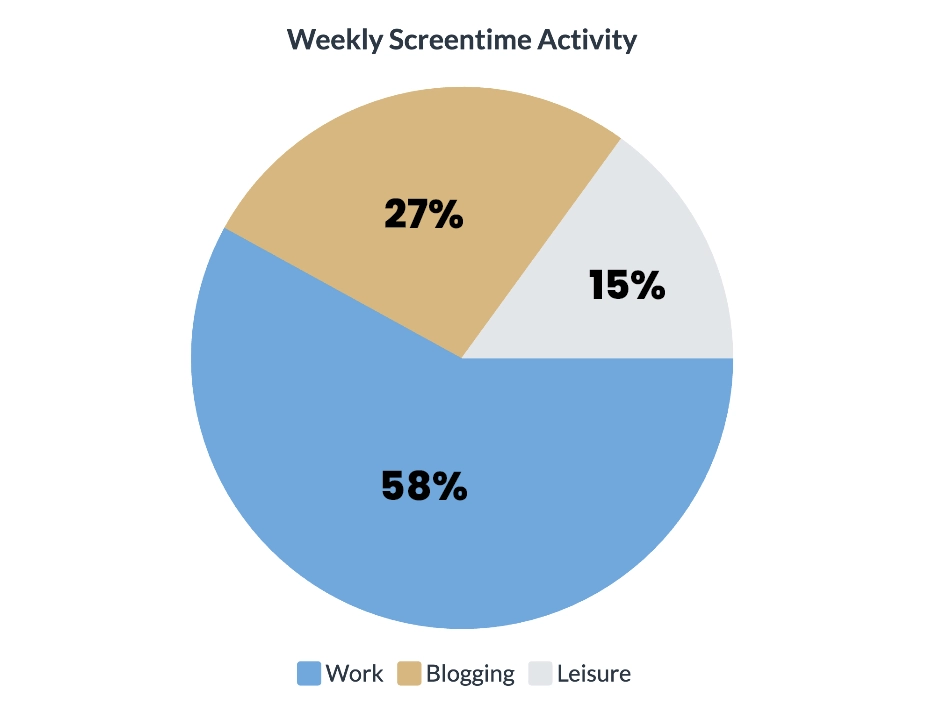
Overall I think my numbers are very high. At this moment in my life, I have a lot of responsibilities at work and I’m trying to get 2 blogs off the ground.
Nonetheless, after seeing my numbers, I decided to do some research and apply some ideas to better manage my screen time.
Screen Time Effects
I’m aware that excessive screen use can lead to a range of health implications, from physical ailments like eye strain to mental health challenges such as anxiety.
I’m lucky to not have suffered from those yet, but I have had periods of tension headaches related to excess screen usage.
Common Sources Of Screen Time
Most people spend the majority of their time on:
Health Implications Of Screen Use
Mental And Emotional Impact
Age-Specific Considerations
It’s important to acknowledge that the appropriate screen is different for various age groups and it can affect development, behavior, and learning abilities.
Screen time guidelines vary by age:
Screen Time For Different Age Groups
Toddlers (0-2 years): For infants and toddlers under 18 months, screen time should be avoided, with the exception of video chatting. For those aged 18-24 months, parents may introduce screen time with a focus on educational content and alongside a caregiver.
Preschoolers (2-5 years): Children aged between 2 and 5 should have less than an hour of screen time on weekdays and up to three hours on weekends. This can include high-quality programs or digital media, and parental engagement during this time is encouraged to help develop language skills.
School-Age Children (5-12 years): Limiting daily screen time to less than two hours can be beneficial. There may be a connection between excessive screen time and behavioral problems in this age group, so active monitoring and content selection are advisable.
Adolescents (13-18 years): As children grow into teenagers, screen time often increases. Experts suggest that parents should still monitor not just the amount but also the quality of screen time, as it can influence behavior and even brain development.
College Students and Young Adults: Young adults should still be conscious of balancing screen time with other activities. Excessive use may impact academic performance and social interactions.
Adults: Adults, especially those who use screens for work, should take regular breaks to prevent eye strain and maintain overall well-being. Parents are role models, and their screen habits can influence their children’s behavior.
Managing Screen Time Guidelines And Tips
Managing screen time is essential for both adults and children.
There are some practical tips for healthy engagement with screens, and strategies for setting limits at home to promote a balanced digital lifestyle.
Official Screen Time Guidelines
Eye care professionals advocate the 20-20-20 rule to reduce eye strain: for every 20 minutes of screen time, one should look at something 20 feet away for at least 20 seconds.
Tips For Healthy Screen Use
It’s important to be aware of the persuasive design of apps that encourage longer user engagement.
Algorithms, particularly in social media apps are designed to keep us hooked and constantly wanting more
Regular visits to a doctor or an eye care specialist can help in identifying any screen-related health effects early on.
💡 Top Tip – Maintain good posture and take frequent breaks and use blue light glasses to minimize any unwanted physiological harm when using screens often
Setting Screen Time Limits At Home
Engaging in the process of setting screen limits can foster responsibility and self-regulation of screen time usage.
Using in app features to limit screen time can be useful too:
Technology And Lifestyle Balance
I’ve found that Implementing a diverse daily routine that includes both digital and real-world experiences can be a great way to reduce screen time and stay on track.
Balancing Online And Offline Activities
To manage recreational screen time, it’s advisable to set specific time limits for activities like watching Netflix or scrolling through social media.
Allocating designated periods for movies, games, and apps can help free up time for other important offline tasks and hobbies.
Monitoring your screen time on a weekly basis will help you benchmark where you’re at and any progress you’ve made.
It’s also a good way to address what apps you’re spending your time on and whether they’re really a productive use of your time. I need to cut back on X and YouTube!
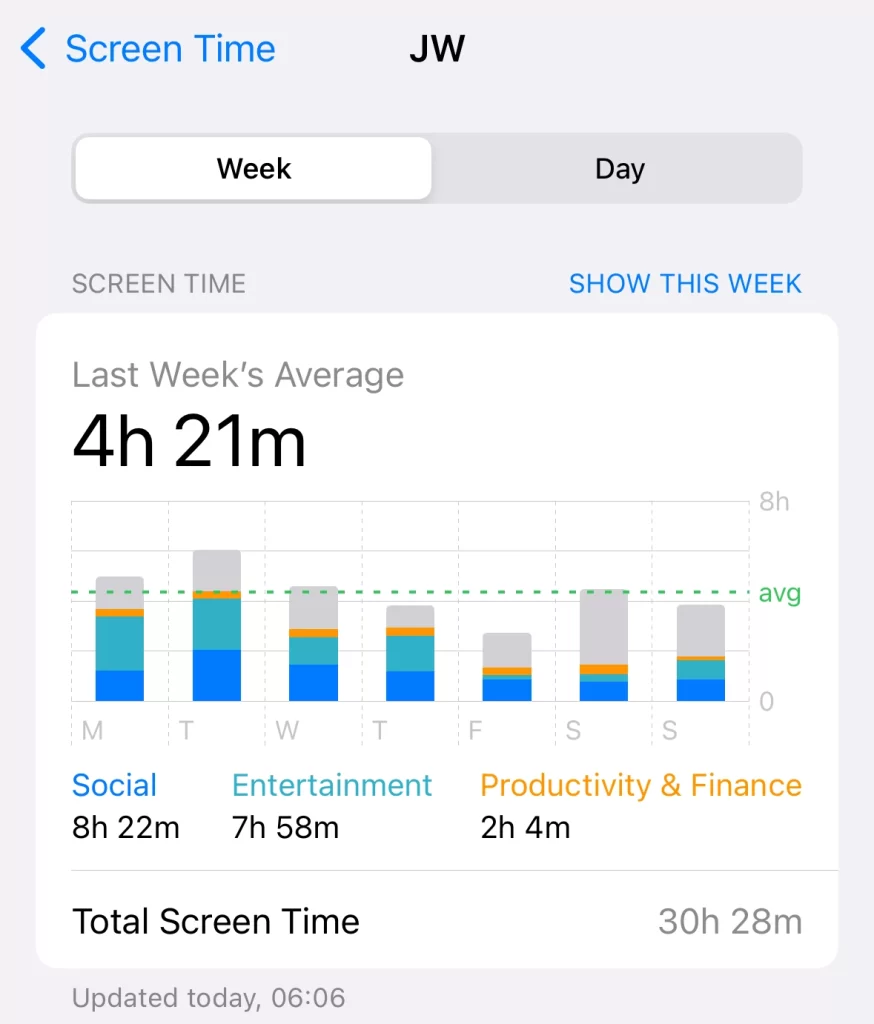
Incorporating Physical Activities
If you like to exercise, I find this can be my number one level to pull to counteract screen time as it requires your full focus or gets you out of the house away from your devices.
Taking short breaks to stretch or scheduling time for sports can also contribute significantly to improved mental and physical health as well as helping you escape the screens.
The Role Of Social Interaction
It’s no secret that excessive reliance on digital communication can lead to feelings of loneliness and reduced satisfaction with friends.
It’s important to keep up some degree of consistent interactions with friends and family to build connections and improve social well-being.
While platforms like social media can be tools for staying in touch, they shouldn’t replace face-to-face socializing.
Managing Screen Time Conclusion
If you’re concerned with your amount of screen time, make sure to try to implement some of these tips.
Exercise and monitoring screen time through my devices so that I can try to reduce it by a few minutes at a time each week has definitely helped.
I’m trying to spend more time when I am on devices focusing on productive work and not scrolling YouTube or X.

For me, the other half of the battle other than reducing time spent on digital devices is spending the time I do productively to help my mental health and reduce fatigue.
Frequently Asked Questions

James Waite
Founder of Remoteopia, James has worked in remote roles for 6 years. After a stint in recruitment, he now works as a director of website strategy in tech.




